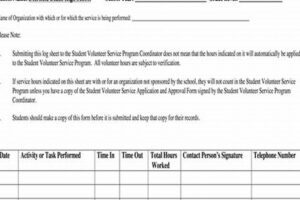Table of Contents
In the vast digital realm, where information cascades like a never-ending waterfall, the Smithsonian Institution stands as a beacon of knowledge and cultural heritage. Its mission to “increase and diffuse knowledge” extends far beyond the walls of its physical museums and reaches into the homes of dedicated individuals who volunteer their time and expertise to enrich the Smithsonian’s digital collections.
The Smithsonian Digital Volunteers program is a remarkable initiative that harnesses the collective power of online collaborators to transcribe, tag, and enrich the Smithsonian’s vast trove of digital archives. From handwritten manuscripts to historic photographs, these volunteers bring history to life by making it accessible and searchable for researchers, educators, and the general public.
As we delve into the world of Smithsonian Digital Volunteers, we’ll explore the motivations behind their selfless contributions, the impact of their work, and the ways in which this program fosters a sense of community and global collaboration.
Smithsonian Digital Volunteers
Empowering Online Collaboration for Historical Enrichment
- Global Network of Volunteers
- Diverse Expertise and Backgrounds
- Virtual Access to Smithsonian Collections
- Transcription and Tagging of Digital Archives
- Enhancing Discoverability and Accessibility
- Supporting Research and Education
- Fostering Community and Collaboration
- Preserving History for Future Generations
Through their dedication and passion, Smithsonian Digital Volunteers are instrumental in bringing the Smithsonian’s vast collections to life, ensuring that this knowledge and heritage remains accessible and impactful for generations to come.
Global Network of Volunteers
The Smithsonian Digital Volunteers program boasts a diverse and passionate community of volunteers spanning the globe. These dedicated individuals hail from all walks of life, united by a shared desire to contribute to the preservation and accessibility of cultural heritage. From students and retirees to historians and language experts, the Smithsonian’s online volunteers bring a wealth of knowledge and expertise to the table.
This global network of volunteers allows the Smithsonian to tap into a vast pool of talent and perspectives, ensuring that its digital collections are enriched with accuracy and inclusivity. Volunteers from different cultural backgrounds provide valuable insights and help bridge linguistic and cultural gaps, making the Smithsonian’s resources more accessible and meaningful to a wider audience.
The Smithsonian Digital Volunteers program also fosters a sense of community and collaboration among its members. Volunteers connect with each other through online forums and social media, sharing their experiences, insights, and challenges. This collaborative spirit not only enhances the quality of the work produced but also creates a supportive and engaging environment for volunteers to learn and grow.
By harnessing the collective power of its global volunteer network, the Smithsonian Institution is able to make its vast collections more accessible, inclusive, and impactful, reaching audiences around the world and inspiring future generations to explore and appreciate the richness of our shared cultural heritage.
The dedication and passion of Smithsonian Digital Volunteers are truly remarkable. Their contributions exemplify the power of collaboration and the transformative impact that individuals can have on preserving and sharing knowledge for the benefit of all.
Diverse Expertise and Backgrounds
The Smithsonian Digital Volunteers program draws upon the diverse expertise and backgrounds of its global volunteer community to enrich its digital collections in myriad ways.
- Historians and Archivists:
Volunteers with historical expertise provide valuable insights into the context and significance of digitized documents, photographs, and artifacts. They help identify and transcribe handwritten manuscripts, translate historical texts, and contribute to the creation of detailed metadata that enhances the discoverability and accessibility of the collections.
- Linguists and Translators:
Volunteers with language skills assist in the transcription and translation of multilingual materials, ensuring that the Smithsonian’s digital collections are accessible to a global audience. They transcribe audio recordings, translate documents and texts, and contribute to the creation of multilingual resources that make the collections more inclusive and representative.
- Subject Matter Experts:
Volunteers with expertise in specific fields, such as art, science, or natural history, provide specialized knowledge that enhances the accuracy and depth of the Smithsonian’s digital collections. They help identify and classify specimens, transcribe scientific data, and contribute to the creation of educational resources that bring the collections to life for learners of all ages.
- Educators and Outreach Specialists:
Volunteers with backgrounds in education and outreach play a vital role in developing engaging and informative resources for students, teachers, and the general public. They create lesson plans, design interactive online exhibits, and lead virtual tours that make the Smithsonian’s collections accessible and meaningful to diverse audiences.
The collective expertise and backgrounds of Smithsonian Digital Volunteers contribute to the richness and diversity of the Smithsonian’s digital collections, ensuring that these resources are inclusive, accurate, and accessible to people around the world.
Virtual Access to Smithsonian Collections
The Smithsonian Digital Volunteers program provides unprecedented virtual access to the Smithsonian’s vast collections, enabling volunteers from around the world to contribute to the enrichment of these resources from the comfort of their own homes. This virtual access has several key benefits:
Convenience and Flexibility:
Volunteers can participate in the program on their own time and at their own pace, making it accessible to individuals with busy schedules or limited mobility. The virtual nature of the program also eliminates the need for travel, reducing barriers to participation for those living in remote or underserved areas.
Global Collaboration:
The virtual platform of the Smithsonian Digital Volunteers program fosters collaboration among volunteers from diverse backgrounds and locations. This global network of volunteers brings a wealth of knowledge and perspectives to the enrichment of the Smithsonian’s collections, ensuring that these resources are inclusive and representative of a wide range of cultures and viewpoints.
Scalability and Efficiency:
The virtual nature of the program allows the Smithsonian to engage a large number of volunteers simultaneously, enabling the rapid and efficient completion of large-scale digitization and enrichment projects. This scalability is essential for processing the vast quantity of materials held in the Smithsonian’s collections and making them accessible to the public.
Enhanced Accessibility:
The Smithsonian Digital Volunteers program contributes to the Smithsonian’s commitment to accessibility by making its collections more accessible to individuals with disabilities. Volunteers help to create alternative text descriptions for images, transcribe audio recordings, and develop accessible online resources, ensuring that people with visual or auditory impairments can fully engage with the Smithsonian’s digital collections.
Through virtual access to the Smithsonian’s collections, the Smithsonian Digital Volunteers program empowers individuals around the world to contribute to the preservation and enrichment of cultural heritage, fostering a sense of global community and shared responsibility for our collective past.
Transcription and Tagging of Digital Archives
At the heart of the Smithsonian Digital Volunteers program lies the meticulous work of transcribing and tagging digital archives. These tasks are essential for making the Smithsonian’s vast collections discoverable, accessible, and meaningful to researchers, educators, and the general public.
- Transcription:
Volunteers transcribe handwritten manuscripts, historical documents, and audio recordings, converting them into digital text that can be easily searched and analyzed. This process helps to unlock the content of these valuable resources, making them accessible to a wider audience and preserving them for future generations.
- Tagging:
Volunteers assign keywords and metadata to digital objects, such as images, videos, and specimens. These tags help to categorize and organize the collections, making them easier to search and discover. By adding relevant tags, volunteers ensure that these resources can be easily found by researchers, educators, and the general public, regardless of their level of expertise.
- Enhancing Discoverability:
Through transcription and tagging, Smithsonian Digital Volunteers significantly enhance the discoverability of the Smithsonian’s digital collections. By converting handwritten text into digital format and assigning relevant keywords and metadata, volunteers make these resources more accessible to search engines and online databases. This increased discoverability leads to a wider audience and greater impact for the Smithsonian’s collections.
- Supporting Research and Education:
The transcription and tagging efforts of Smithsonian Digital Volunteers directly support research and education. Researchers can easily search and analyze transcribed texts and tagged digital objects, leading to new insights and discoveries. Educators can incorporate these resources into their lesson plans, creating engaging and interactive learning experiences for students of all ages.
The dedication and meticulous work of Smithsonian Digital Volunteers in transcribing and tagging digital archives play a vital role in preserving our cultural heritage, enhancing the accessibility and discoverability of the Smithsonian’s collections, and supporting research and education around the world.
Enhancing Discoverability and Accessibility
The Smithsonian Digital Volunteers program plays a pivotal role in enhancing the discoverability and accessibility of the Smithsonian’s vast digital collections, making them more visible and accessible to researchers, educators, and the general public.
- Search Engine Optimization:
Smithsonian Digital Volunteers help to improve the discoverability of the Smithsonian’s digital collections by optimizing them for search engines. They add relevant keywords and metadata to digital objects, ensuring that these resources appear higher in search results when people are looking for information related to the Smithsonian’s collections.
- Online Databases and Platforms:
Smithsonian Digital Volunteers contribute to the development and maintenance of online databases and platforms that showcase the Smithsonian’s digital collections. These platforms are designed to be user-friendly and accessible to people with diverse needs and abilities. Volunteers help to organize and categorize digital objects, making them easy to browse and explore.
- Educational Resources:
Smithsonian Digital Volunteers create educational resources, such as lesson plans, interactive exhibits, and virtual tours, that utilize the Smithsonian’s digital collections. These resources are designed to engage students and educators, bringing the Smithsonian’s collections to life in the classroom and beyond.
- Outreach and Promotion:
Smithsonian Digital Volunteers actively promote the Smithsonian’s digital collections through social media, online forums, and public events. They share stories and highlights from the collections, encouraging people to explore and learn from these valuable resources. Through their outreach efforts, volunteers help to expand the audience of the Smithsonian’s digital collections and foster a sense of community among those who appreciate and value cultural heritage.
By enhancing the discoverability and accessibility of the Smithsonian’s digital collections, Smithsonian Digital Volunteers ensure that these resources are widely available and can be enjoyed and appreciated by people around the world.
Supporting Research and Education
The Smithsonian Digital Volunteers program makes significant contributions to supporting research and education by providing access to and enriching the Smithsonian’s vast digital collections. These collections serve as invaluable resources for scholars, students, and educators around the world.
- Research:
Smithsonian Digital Volunteers help to make the Smithsonian’s digital collections more accessible and discoverable for researchers. By transcribing handwritten documents, tagging digital objects, and enhancing metadata, volunteers enable researchers to easily search and analyze these resources, leading to new insights and discoveries across a wide range of disciplines.
- Education:
Smithsonian Digital Volunteers create educational resources, such as lesson plans, interactive exhibits, and virtual tours, that utilize the Smithsonian’s digital collections. These resources align with educational standards and are designed to engage students and educators, bringing the Smithsonian’s collections to life in the classroom and beyond. Volunteers also lead virtual workshops and webinars, providing educators with the skills and knowledge to effectively integrate the Smithsonian’s digital collections into their teaching.
- Public Engagement:
Smithsonian Digital Volunteers play a vital role in public engagement by sharing the Smithsonian’s digital collections with a wider audience. Through social media, online forums, and public events, volunteers promote the collections and encourage people to explore and learn from these valuable resources. By fostering a sense of community and shared appreciation for cultural heritage, volunteers help to connect people with the Smithsonian’s mission to increase and diffuse knowledge.
- Global Collaboration:
The Smithsonian Digital Volunteers program fosters global collaboration in research and education. Volunteers from around the world contribute their expertise and perspectives to the enrichment of the Smithsonian’s digital collections, ensuring that these resources are inclusive and representative of diverse cultures and viewpoints. This global collaboration leads to a richer and more comprehensive understanding of our shared cultural heritage.
Through their dedication and contributions, Smithsonian Digital Volunteers play a vital role in supporting research, education, and public engagement, extending the reach and impact of the Smithsonian’s digital collections to audiences around the world.
Fostering Community and Collaboration
The Smithsonian Digital Volunteers program fosters a vibrant community of volunteers who are passionate about preserving and sharing cultural heritage. This community extends beyond geographical boundaries, connecting individuals from diverse backgrounds and expertise.
- Online Forums and Social Media:
Smithsonian Digital Volunteers connect with each other through online forums and social media groups. These platforms provide a space for volunteers to share their experiences, insights, and challenges, as well as to collaborate on projects and provide mutual support. The online community fosters a sense of belonging and camaraderie among volunteers, who often form lasting friendships and connections.
- Virtual Events and Workshops:
The Smithsonian Digital Volunteers program organizes regular virtual events and workshops that bring volunteers together to learn, collaborate, and celebrate their contributions. These events include webinars, online conferences, and virtual hackathons, where volunteers can share their skills and expertise, and work together on projects that enhance the Smithsonian’s digital collections.
- Global Collaboration:
The Smithsonian Digital Volunteers program actively promotes global collaboration among its volunteers. Volunteers from different countries and cultures work together to transcribe, tag, and enrich the Smithsonian’s digital collections, ensuring that these resources are inclusive and representative of diverse perspectives. This global collaboration fosters a sense of unity and shared responsibility for preserving and sharing our collective cultural heritage.
- Recognition and Appreciation:
The Smithsonian Institution recognizes and appreciates the contributions of its Digital Volunteers through various initiatives. Volunteers receive certificates of appreciation, have their names listed on the Smithsonian’s website, and may be invited to participate in special events and exhibitions. This recognition not only acknowledges the volunteers’ hard work and dedication but also strengthens their sense of community and belonging.
By fostering a strong sense of community and collaboration, the Smithsonian Digital Volunteers program creates a supportive and engaging environment where volunteers can learn, grow, and contribute to the preservation and enrichment of cultural heritage.
Preserving History for Future Generations
The Smithsonian Digital Volunteers program plays a vital role in preserving history for future generations by digitizing, transcribing, and enriching the Smithsonian’s vast collections. These collections contain precious artifacts, documents, and specimens that tell the story of our shared human history and culture.
By transcribing handwritten manuscripts, tagging digital objects, and enhancing metadata, Smithsonian Digital Volunteers help to make these collections more accessible and discoverable. This ensures that future generations can easily find and learn from these valuable resources, regardless of their location or background.
The Smithsonian’s digital collections are also preserved for posterity through the use of state-of-the-art technology and digital preservation best practices. Smithsonian Digital Volunteers contribute to this preservation effort by ensuring that the collections are properly digitized and stored in a secure and reliable manner. This helps to protect these valuable resources from deterioration and loss, ensuring that they remain accessible for generations to come.
Furthermore, the Smithsonian Digital Volunteers program actively promotes the Smithsonian’s digital collections through social media, online exhibits, and educational resources. By sharing these collections with a wider audience, volunteers help to raise awareness of the importance of preserving our cultural heritage and inspire future generations to appreciate and learn from the past.
Through their dedication and contributions, Smithsonian Digital Volunteers play a crucial role in preserving history for future generations, ensuring that our shared cultural heritage remains accessible, discoverable, and meaningful for years to come.
FAQ
Smith\u00e2 Digital Volunteers: Frequently Ask Questions
Here are some commonly asked questions about the Smith\u00e2 Digital Volunteers program, along with their answers:
Question 1: What is the Smith\u00e2 Digital Volunteers program?
Smith\u00e2 Digital Volunteers is an online program that allows individuals from around the world to contribute their time and expertise to transcribe, tag, and enhance the Smithsonian’s vast digital collections.
Question 2: Who can become a Smith\u00e2 Digital Volunteer?
Anyone with a passion for history, culture, and digital technology can become a Smith\u00e2 Digital Volunteer. There are no specific educational or experience requirements, and volunteers can participate from anywhere in the world.
Question 3: What tasks do Smith\u00e2 Digital Volunteers perform?
Smith\u00e2 Digital Volunteers perform a variety of tasks, including trans forageing handwritten\u00e2\u00e4, tagging digital objects, enhancing metadata, and creating educational resources. These tasks help to make the Smithsonian’s digital collections more accessible, discoverable, and meaningful to researchers, educators, and the general public.
Question 4: How much time do Smith\u00e2 Digital Volunteers need to commit?
Smith\u00e2 Digital Volunteers can commit as little or as much time as they like. Some volunteers contribute a few hours per week, while others contribute several hours per day. Volunteers can work on tasks at their own pace and on their own schedule.
Question 5: What resources and training are provided to Smith\u00e2 Digital Volunteers?
Smith\u00e2 Digital Volunteers are provided with comprehensive training materials and resources to help them complete their tasks. These resources include detailed instructions, online tutorials, and access to a community of experienced volunteers who are always willing to provide support and encouragement.
Question 6: How can I become a Smith\u00e2 Digital Volunteer?
To become a Smith\u00e2 Digital Volunteer, simply visit the Smithsonian Digital Volunteers website and fill out an online application. Once your application is approved, you will receive an email with instructions on how to access the volunteer platform and get started with your tasks.
Smith\u00e2 Digital Volunteers are a dedicated and invaluable community of individuals who are making a real difference in preserving and sharing our cultural heritage. If you are interested in joining this dynamic and rewarding program, we encourage you to apply today.
To learn more about the Smith\u00e2 Digital Volunteers program and how you can get involved, please visit the Smithsonian Digital Volunteers website or contact the program coordinator at Smith\[email protected].
Tips
Tips for Smith\u00e2 Digital Volunteers:
Here are some practical tips to help you get the most out of your Smithsonian Digital Volunteers experience:
Tip 1: Choose Tasks that Interest You:
There are a variety of tasks available to Smith\u00e2 Digital Volunteers, so take some time to explore the different options and choose tasks that align with your interests and skills. Whether you enjoy transcribing historical documents, tagging digital images, or creating educational resources, there’s sure to be a task that you’ll find engaging and rewarding.
Tip 2: Set Realistic Goals:
Don’t try to do too much too soon. Start by setting realistic goals for yourself and gradually increase your workload as you become more comfortable with the tasks. Remember, every contribution, no matter how small, makes a difference.
Tip 3: Take Breaks:
It’s important to take breaks throughout the day, especially if you find yourself starting to lose focus or feel overwhelmed. Get up and move around, or step outside for some fresh air. Taking short breaks will help you stay refreshed and productive.
Tip 4: Connect with the Community:
The Smithsonian Digital Volunteers program has a vibrant online community where volunteers can connect with each other, share their experiences, and seek support. Take advantage of this community by participating in online forums, attending virtual events, or joining social media groups. Connecting with other volunteers will make your experience more enjoyable and rewarding.
Remember, as a Smith\u00e2 Digital Volunteer, you are part of a global community of individuals who are passionate about preserving and sharing cultural heritage. Your contributions are invaluable and make a real difference in making the Smithsonian’s vast collections accessible to people around the world.
To learn more about the Smith\u00e2 Digital Volunteers program and how you can get involved, please visit the Smithsonian Digital Volunteers website or contact the program coordinator at Smith\[email protected].
Conclusion
The Smithsonian Digital Volunteers program is a remarkable initiative that brings together a global community of volunteers who are passionate about preserving and sharing cultural heritage. Through their dedication and contributions, these volunteers are making the Smithsonian’s vast digital collections more accessible, discoverable, and meaningful to people around the world.
Smithsonian Digital Volunteers come from diverse backgrounds and possess a wide range of expertise. They transcribe handwritten documents, tag digital objects, enhance metadata, and create educational resources. These tasks may seem small, but they have a profound impact on the accessibility and usability of the Smithsonian’s collections. By making these collections more discoverable, volunteers are helping to ensure that they are used by researchers, educators, and the general public to foster a greater understanding of our shared history and culture.
The Smithsonian Digital Volunteers program is not only about preserving history, but also about fostering community and collaboration. Volunteers connect with each other through online forums, social media groups, and virtual events. They share their experiences, insights, and challenges, creating a supportive and engaging environment where volunteers can learn, grow, and contribute to a common goal. This sense of community and collaboration is essential for the success of the program and helps to create a truly global network of individuals who are dedicated to preserving our cultural heritage.
As a Smithsonian Digital Volunteer, you are part of something truly special. You are part of a community of individuals who are making a real difference in the world. Your contributions are invaluable and help to ensure that future generations can learn from and appreciate the Smithsonian’s vast collections. We encourage you to join us on this journey of discovery and preservation.






